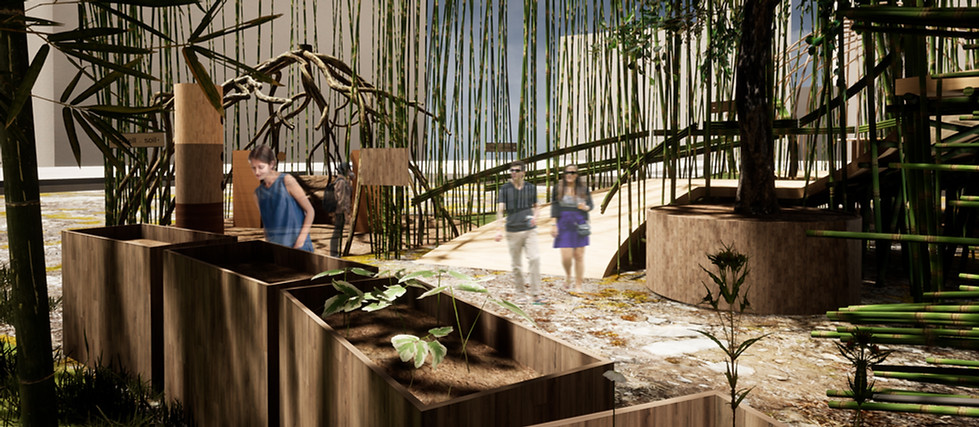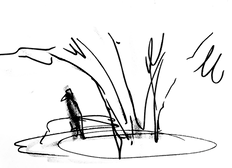top of page

WeTree In harmony with nature
EXHIBITION
WeTree is an exhibition designed to encourage visitors to plant trees, in an effort to improve the environment.
Each section of the exhibition - root, trunk, and canopy - helps visitors learn the functions of each part of a tree and its relationship to the ecosystem. Through this learning experience, visitors can appreciate the significant contribution of trees to our well-being. As a call to action, visitors are provided seeds and soil and asked to plant a tree.
DESIGN STORY
Environmental issues, caused by humans, have been building for decades, and are bringing serious changes to our everyday lives: climate change, soil erosion, poor air quality, and undrinkable water. In addition, these impacts affect not only ourselves but for all species of plants and animals.
To build a better living environment for all on this planet, we must dedicate ourselves to solving the issues by various approaches, such as new energy innovation, reusable products, and enforcement of these policies. Furthermore, we must keep educating people to increase awareness of ways to protect nature.
This exhibit focuses on an immersive, forest experience, to allow guests to find respect for the significance of trees. Present harmony with nature, taking those benefits, and then asking every individual to participate in environmental protection, can help solve some of the issues we face. I believe planting trees is the easiest, most efficient way for each of us to improve the environment.



Pershing Square, DTLA
The exhibit will be located in Pershing Square, a small public park in Downtown Los Angeles. It's one square block in size, bounded by 5th Street to the north, 6th Street to the south, Hill Street to the east, and Olive Street to the west. It lies atop a large underground parking garage. High rectangular buildings surround the park and give a high contrast to the natural form of the exhibit.
SPATIAL LAYOUT
People are somewhat familiar with trees; their shapes, smells, and colors. I suggest presenting a different perspective to pique the audience’s curiosity. I divided the tree into three parts: root, trunk, and canopy; and then enlarged the scale. This allows audiences to experience the spaces under the root, inside the trunk, and atop the canopy. Experiencing each section in a multi-sensory way creates a unique opportunity. It will be the spotlight of engaging this exhibition.



SECTION ONE
- the Scent of Soil
In this experience, visitors are shown the function of tree roots. Not only do they purify soil and water, but roots also provide homes for insects and small animals. The exhibit will show examples of the soil before and after it has been purified by tree roots.

SECTION TWO
- the Feel of Wood
This section provides information about tree trunk functions such as the vascular system that can pump water from the root to the top of the tree. Also, this section displays different types of wood and information about wood uses.

SECTION THREE
- the View of Light
Here, visitors have shown the structure of a tree’s topmost ecosystem, as well as the animal species that call the forest canopy home. This area mimics the space of a canopy so that visitors may experience its function: such as clean air, cooler temperatures, and less noise. Guests are encouraged to pick up seeds here to plant in the next section.

Exit experience

PLANTING SEEDS
As visitors exit the exhibition, they are encouraged to plant seeds in the planters. Next, visitors may swap their freshly planted seeds with emerging saplings to bring home.
PHYSICAL MODEL

20220107021558

04

01

20220107021558
1/8
MINDMAP

SKETCHES













AWARD
IIDA 2020 Best of Design Student Competition
- The Honorable Mention
bottom of page